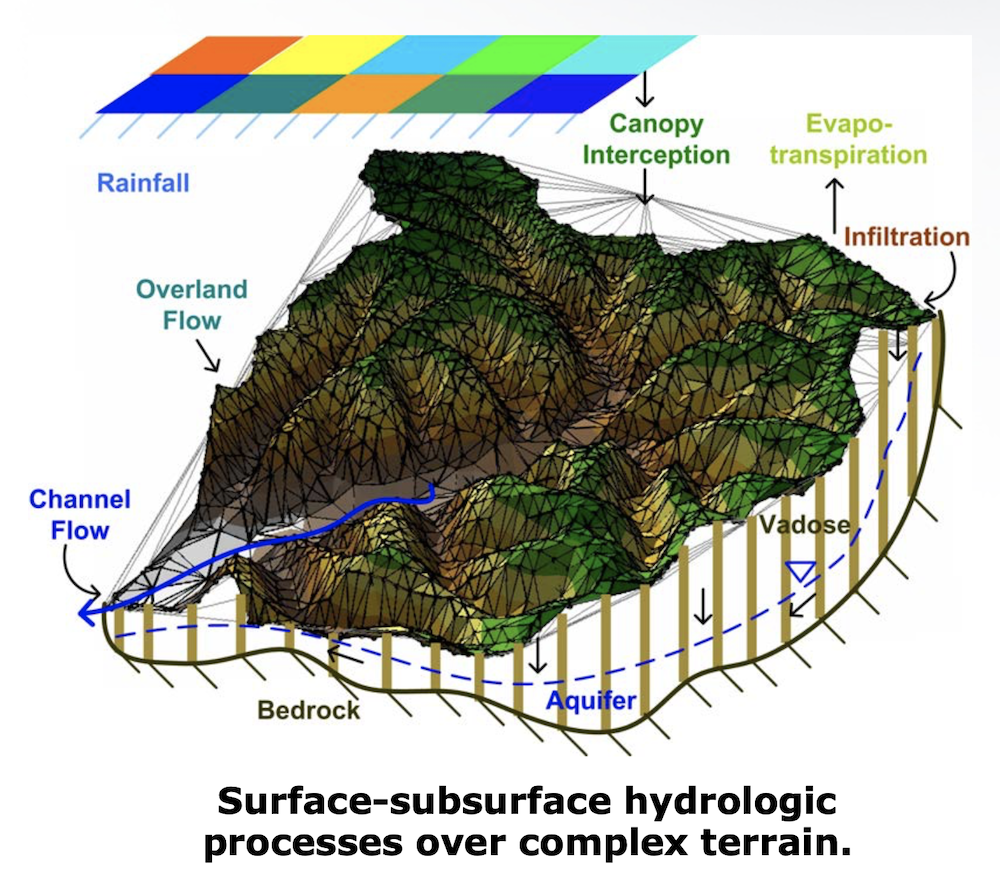Distributed Hydrologic Model tRIBS¶
The development of the tRIBS Model has been the result of hydrologic modeling and software development efforts performed by various researchers in the Ralph M. Parsons Laboratory in the Department of Civil and Environmental Engineering of the Massachusetts Institute of Technology. Model development continues at MIT and New Mexico Tech, among other partnering institutions. This document is intended to serve as a user manual for the tRIBS Model, including instructions on how to download, compile, set up and run tRIBS. In addition, an effort has been made to document the model software design using class and workflow diagrams. This guide assumes that the reader is familiar with the capabilities of the tRIBS Model and its intended purposes. More information concerning the model can be obtained through the tRIBS Research Description and Publication List.
The TIN-based Real-time Integrated Basin Simulator (tRIBS), is fully distributed model of hydrologic processes.

The tRIBS model description can be found in [Ivanov_2004a], [Ivanov_2004b] and [Vivoni_2004].
We mention a few tRIBS processes it models:
- Couple the vadose and saturated zones with the dynamic water table.
- Moisture infiltration waves.
- Soil moisture redistribution.
- Topography-driven lateral fluxes in the vadose and groundtable zones.
- Computes the radiation and energy balance.
- Interception, evaporation and evpotrasnpiration.
- Hydrologic and hydraulic routing.
- other.
| [Ivanov_2004a] | Ivanov, V.Y., Vivoni, E.R., Bras, R.L. and Entekhabi, D. 2004a. Catchment Hydrologic Response with a Fully-Distributed Triangulated Irregular Network Model. Water Resources Research. 40(11): W11102. |
| [Ivanov_2004b] | Ivanov, V.Y., Vivoni E.R., Bras, R.L. and Entekhabi, D. 2004b. Preserving high-resolution surface and rainfall data in operational-scale basin hydrology: A fully-distributed, physically-based approach. Journal of Hydrology. 298(1-4): 80-111 |
| [Vivoni_2004] | Vivoni, E. R., Ivanov, V. Y., Bras, R. L. & Entekhabi, D. (2004). Generation of triangulated irregular networks based on hydrological similarity.Journal of Hydrologic Engineering, 9(4), 288–302. |
Last update: Carlos Lizarraga, 14/04/2020